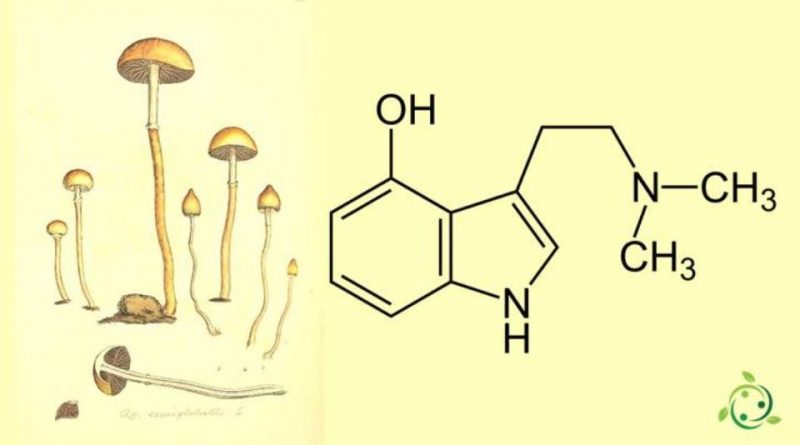Psilocin
Psilocin
Psilocin, whose abbreviated term is: 4-HO-DMT and the official name in the IUPAC nomenclature is: 4-hydroxy-N, N-dimethyl-tryptamine or 3- (2- (dimethylamino) ethyl) -1H-indol- 4-ol is an alkaloid.
Psilocin has a brute or molecular formula: C12H16N2O and is a psychedelic hallucinogenic tryptamine that can be extracted from some mushrooms of the genus Psilocybe, Stropharia and Gymnopilus viridans.
Psilocin has a chemical structure similar to the neurotransmitter serotonin and is chemically related to psilocybin, baeocystin and norbaeocystin.
Psilocin was first isolated by chemist Albert Hofmann in 1958.
Psilocin is an agonist of the 5HT2A serotonin receptors, activated by most psychedelics, and of the 5HT2C and 5HT1A receptors. After a certain period of time, a significant amount of psilocin molecules undergo enzymatic degradation by MAOs. In fact, taking MAO inhibitors during the experience (which block the metabolism of other amines including those that increase blood pressure) prolongs and enhances the effects. If psilocin is taken by ingesting psilocybin mushrooms, the level of psilocybin will increase due to psilocybin dephosphorylation following ingestion.
While psilocybin is an extremely low-toxic alkaloid and presents neither neurotoxicity nor risk of permanent physical damage, even at high doses, non-hallucinogenic doses of psilocin can prevent cluster headache attacks. The LD50 is estimated to be 280mg / kg. As with most serotonergic hallucinogens, tolerance rises for a few days following the experience and then returns to biological levels.
The effects associated with taking psilocin are those of paranoia and dysphoria if not terror, called bad trip in jargon. In a small percentage of users, depression and paranoia can persist for several months after the experience. The risk increases if the user already has latent psychic pathologies, and in fact the assumption of a “classic” dose of psilocin is usually not recommended for people with strong mental disharmonies; in this case it is advisable to lower the dose for the intake.
The effects of taking psilocin occur between 10 and 40 minutes after ingestion, increasing for the following 20 to 60 minutes, peaking and holding for 2 to 4 hours, and losing potency for the next 2 hours. Furthermore, it is possible to feel the physical and psychic effects of the molecule even for 8 hours after the hallucinatory and psychedelic effects have faded.
The effects, however, vary greatly from person to person, but some occur more or less always:
– In general, low doses cause euphoria and hilarity, a mild hallucinatory state and mydriasis;
– medium and high doses cause a strong psychedelic experience with noticeable hallucinations. With your eyes closed you can see kaleidoscopes and fractals, and time seems to dilate.
– Very high doses cause even more realistic journeys, mystical experiences, religious reflections and feelings of total abstraction from material life (the so-called near death experiences). The subject can be completely isolated from reality, he can lose track of space and time, and in extreme cases lose track of his ego and fail to distinguish boundaries between himself and reality.
Warning: The information shown is not medical advice and may not be accurate. The contents are for illustrative purposes only and do not replace medical advice.

